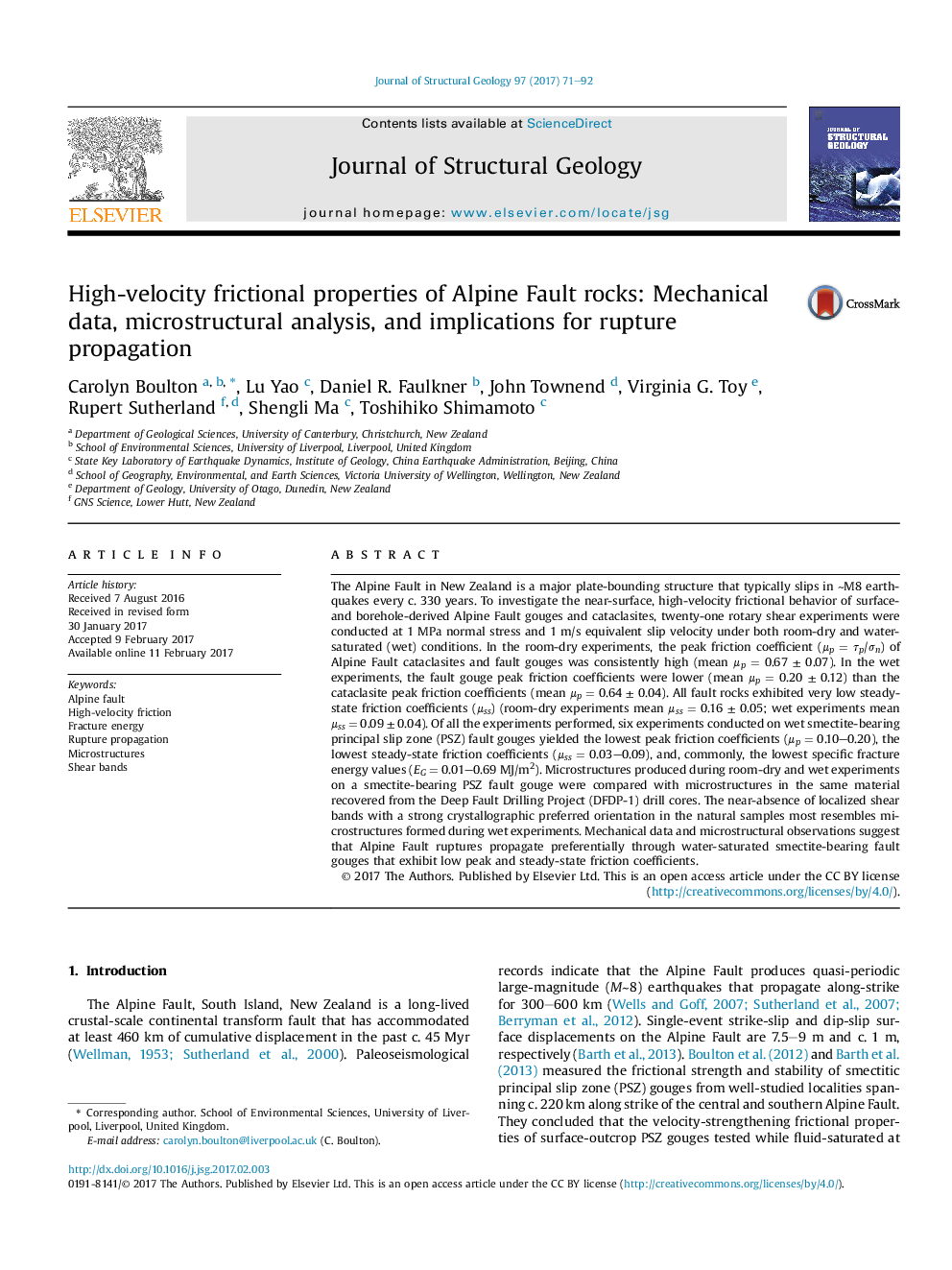| Article ID | Journal | Published Year | Pages | File Type |
|---|---|---|---|---|
| 5786339 | Journal of Structural Geology | 2017 | 22 Pages |
â¢Alpine Fault rocks exhibit weak friction in high-velocity experiments.â¢Wet smectitic gouges have the lowest peak friction and steady state friction values.â¢Rupture propagation through wet smectitic gouges is energetically favorable.â¢Wet experimental gouge microstructures resemble natural gouge microstructures.
The Alpine Fault in New Zealand is a major plate-bounding structure that typically slips in â¼M8 earthquakes every c. 330 years. To investigate the near-surface, high-velocity frictional behavior of surface- and borehole-derived Alpine Fault gouges and cataclasites, twenty-one rotary shear experiments were conducted at 1 MPa normal stress and 1 m/s equivalent slip velocity under both room-dry and water-saturated (wet) conditions. In the room-dry experiments, the peak friction coefficient (μp = Ïp/Ïn) of Alpine Fault cataclasites and fault gouges was consistently high (mean μp = 0.67 ± 0.07). In the wet experiments, the fault gouge peak friction coefficients were lower (mean μp = 0.20 ± 0.12) than the cataclasite peak friction coefficients (mean μp = 0.64 ± 0.04). All fault rocks exhibited very low steady-state friction coefficients (μss) (room-dry experiments mean μss = 0.16 ± 0.05; wet experiments mean μss = 0.09 ± 0.04). Of all the experiments performed, six experiments conducted on wet smectite-bearing principal slip zone (PSZ) fault gouges yielded the lowest peak friction coefficients (μp = 0.10-0.20), the lowest steady-state friction coefficients (μss = 0.03-0.09), and, commonly, the lowest specific fracture energy values (EG = 0.01-0.69 MJ/m2). Microstructures produced during room-dry and wet experiments on a smectite-bearing PSZ fault gouge were compared with microstructures in the same material recovered from the Deep Fault Drilling Project (DFDP-1) drill cores. The near-absence of localized shear bands with a strong crystallographic preferred orientation in the natural samples most resembles microstructures formed during wet experiments. Mechanical data and microstructural observations suggest that Alpine Fault ruptures propagate preferentially through water-saturated smectite-bearing fault gouges that exhibit low peak and steady-state friction coefficients.
